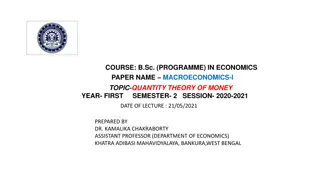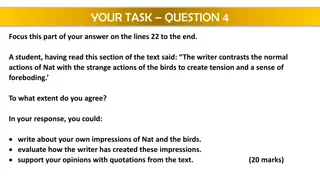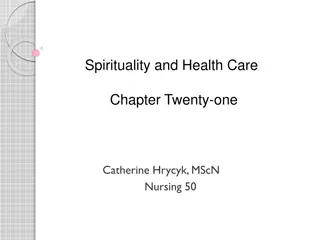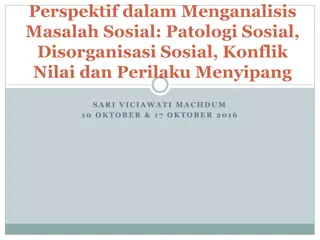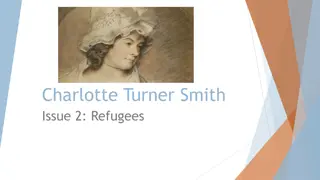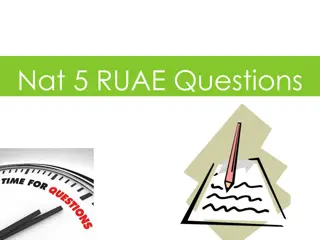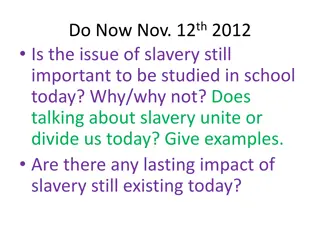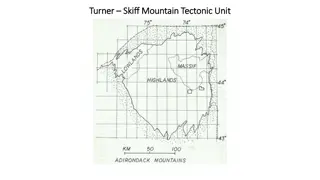Remembering Nat Turner: Perspectives from Historical Documents
Explore various perspectives on Nat Turner's legacy through historical documents such as "The Insurrection" by William Lloyd Garrison, "The Confessions of Nat Turner" by Thomas R. Gray, and analyses by scholars like John W. Cromwell and William S. Drewry. The documents shed light on Turner's role as a brave prophet, the aftermath of his rebellion, and reactions from different segments of society during that time.
Download Presentation

Please find below an Image/Link to download the presentation.
The content on the website is provided AS IS for your information and personal use only. It may not be sold, licensed, or shared on other websites without obtaining consent from the author.If you encounter any issues during the download, it is possible that the publisher has removed the file from their server.
You are allowed to download the files provided on this website for personal or commercial use, subject to the condition that they are used lawfully. All files are the property of their respective owners.
The content on the website is provided AS IS for your information and personal use only. It may not be sold, licensed, or shared on other websites without obtaining consent from the author.
E N D
Presentation Transcript
The purpose of this investigation is to answer a historical question: How should Nat Turner be remembered?
Source 2: The Insurrection The Liberator by William Lloyd Garrison Adjectives in the document to describe Turner: dreadful, guilty, speedily Quote from document: The dead bodies of white and black lying just as they were slain, unburied the oppressor and the oppressed equal at last in death what a spectacle! Term that best describes Turner in this document: Brave Prophet
Thomas R. Gray, The Confessions of Nat Turner, 1831 After his capture and arrest on October 30, 1831, Nat Turner was imprisoned in the Southampton County Jail, where he was interviewed by Thomas R. Gray, a Southern physician, failed planter, and slave owner. Gray said that only Turner s words were written down, but in several instances Gray s words appear in the confession.
William Lloyd Garrison, The Insurrection, The Liberator, 1831 Through his newspaper, The Liberator, William Lloyd Garrison Garrison spoke out against slavery and for the rights of black Americans for 35 years. Garrison, a leader among American abolitionists, delivered his views with great conviction, as well as great foresight. "Posterity," he concluded in the editorial "will bear testimony that I was right. Posterity: the future
The Richmond Enquirer, 1831 This newspaper was published in a Southern city and was read widely by planters throughout the region. They tended to promote the political views of the upper class planters(rich white men) who paid to subscribe to the paper
John W. Cromwell, The Aftermath of Nat Turners Rebellion, The Journal of Negro History, 1920 Born a slave in Portsmouth, Virginia, Cromwell was sent to a private school in Philadelphia after his father purchased the family s freedom. Cromwell became a teacher, writer, and political activist. He was one of the first to write in the academic field of African American History.
William S. Drewry, Slave Insurrections in Virginia, 1900 A white Virginian who grew up near the area of the rebellion and descended from a family of planters and slave owners, Drewry researched Nat Turner for his dissertation at Johns Hopkins University. Drewry read lots of primary sources and interviewed whites and blacks who knew people who were alive in 1831. He believed that slavery was a good thing, that slaves were happy, and that they rarely rebelled.
Text Text What is visible/readable visible/readable, i e. ., what information is provided by the source?
Context What was going on during the time period? What background information do you have that helps explain the information found in the source?
Subtext What is between the lines? Ask questions about the following: Author: Who created the source, and what do we know about that person? Audience: For whom was the source created? Reason: Why was this source produced when it was?



